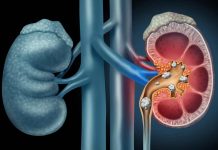
(AscendHealthy.com) – Little could convince most coffee lovers to reconsider that daily morning java fix. Regardless of how we drink it, many of us view that first cup of the day as a ray of liquid light that somehow makes mornings more tolerable.
Some of us might be a little heartbroken to find out we could be drinking mold with our favorite brew — and along with it, some of us could even be ingesting dangerous mycotoxins. Here’s what every coffee drinker needs to know.
Cream, Sugar or Fungi?
We should be able to drink our coffee with the confidence that we’re only consuming what we know we put in it. But according to a recent meta-analysis covering 94 studies worldwide, 53% of coffee products tested were contaminated with some type of mold or fungus. Aspergillus is the most commonly found contaminant.
Another study that looked at specific strains found 26 distinct species among dozens of unbrewed coffee samples. Most couldn’t survive high temperatures, but a few mold strains were isolated even after coffee was brewed at 158 to 176 degrees Fahrenheit — some of which the researchers were unable to identify.
Potential Health Effects
Many mold species that grow on coffee produce mycotoxins, and ochratoxin A (OTA) is the most commonly detected. This neurotoxin occurs on varieties of raw, roasted and instant coffees. It can damage the kidneys, dampen the immune system and even cause birth defects. Authorities have also listed it as a possible carcinogen.
Some people are more susceptible to OTA poisoning than others, with genetics likely playing a role. Changes in kidney function are common, with studies documenting acute organ failure in severe cases. Sufferers may also be prone to infection. Other symptoms can include respiratory distress, upper abdominal pain and fatigue. Neurological effects may present far later in the form of neurodegenerative disease.
How to Reduce Exposure
The extent of potential exposure can vary, depending on the source. Wetter weather patterns allow for optimal mold growth, and all coffee is farmed in tropical climates, which makes individual growing conditions and bean processing important factors.
Look for companies that pride themselves in their practices, ensuring their beans remain at their best possible quality at every stage. Scarce resources can affect the purity of beans grown in impoverished areas, so consider specific regions when searching for mold-free coffee brands.
We can also test for the presence of spores on our own. According to Mold Blogger, we can assume our current beans are contaminated when a used coffee filter, left a day or two untouched, smells musty or shows signs of visible growth.
Some of us could be getting more than we bargained for in our coffee, but we can protect ourselves moving forward by researching our brands and being picky about our sources. We drink our favorite roasts to feel at our best each day, so it’s important that we make each cup count. Bean quality could make a difference.
~Here’s to Your Healthy Ascension
Copyright 2024, AscendHealthy.com




















